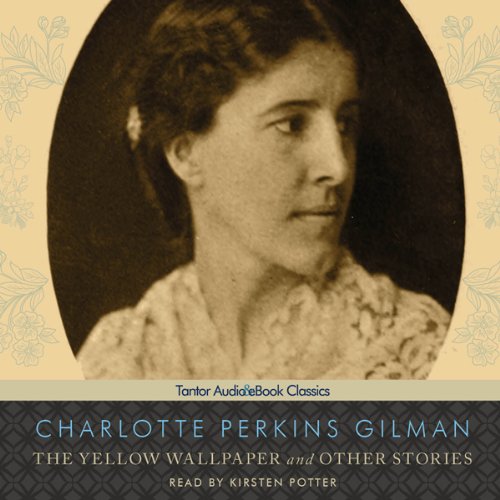
This collection brings together 12 of the finest short stories of prominent American feminist author Charlotte Perkins Gilman. “The Yellow Wallpaper”, Gilman’s best-known work, was first published in 1892 and represents an important examination of 19th-century attitudes toward women’s physical and mental health. Written as a collection of journal entries by a woman whose physician husband has confined her to her bedroom, the story depicts the narrator’s descent into psychosis as her confinement gradually erodes her sanity.
This collection also includes the stories “The Giant Wistaria”, “According to Solomon”, “The Boys and the Butter”, “Her Housekeeper”, “Martha’s Mother”, “A Middle-Sized Artist”, “An Offender”, “When I Was a Witch”, “The Cottagette”, “Making a Living”, and “Mr. Robert Grey Sr.”

What’s really behind that ugly wallpaper? The Yellow Paper by Charlotte Perkins Gillman is one of the most fascinating short reads ever. I was assigned to read this classic gem in my literature class in College and I couldn’t believe how well this short story was written. The book is in first person, it feels like a diary, very personal, intimate, and scary all at the same time. The ending is bone-chilling and brilliant. Gillman is some writer, why haven’t I heard about this amazing book before? Wonderful, insightful quick read, a must…
An excellent selection of feminist short stories. The Yellow Wallpaper and other stories by Charlotte Perkins Gilman is a wonderful compilation of feminist short stories. The first story, The Yellow Wallpaper reminds us, even today, that a woman who allows herself to become dominated to the point where her talents are suppresed can made herself a prisoner of her own creativity. The protagonist,much like Gilman, has a “nervous disorder.” Unlike Gilman, who wrote her way out of the “disorder” the “wife” is not…
Plenty of Historical Value Gilman’s novel is even more relevant today than when it was first printed. More than merely a narrative of female intellectual oppression or a critique of late 19th century social mores, “The Yellow Wallpaper” documents a practice that was common among the middle and upper class. Known as the “rest cure,” women who displayed signs of depression or anxiety were committed to lie in bed for weeks at a time, and allowed no more than twenty minutes of intellectual exertion a day…